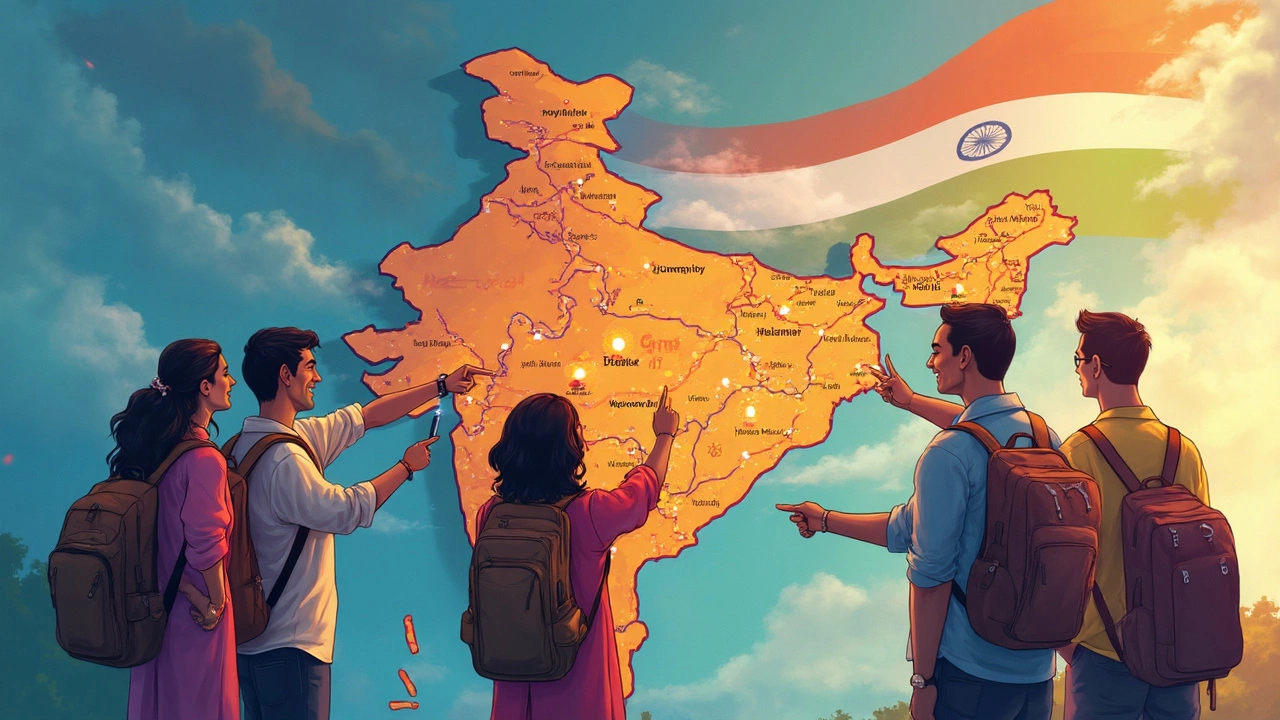You'd think a country with over a billion people would treat its engineering colleges like cricket stadiums: pop one up in every town and call it a day. Not so with the IITs. These are elite, pretty much the dream destination for every science and tech nerd in India. The IIT badge is such a big deal that parents start plotting their kids' JEE prep before they're out of primary school. But here’s something those endless coaching ads never mention: just how many of these iconic campuses are actually out there? The answer might surprise you, especially if you haven't kept up with the latest additions. India’s education roadmap is always on the move, and the IIT story is far from static. Let’s break down the full picture—the past, the present, the quirky facts, and even what’s next for these scientific legends.
How Many IITs Are There in India Today?
The question pops up in quizzes, job interviews, Pokémon-style trivia showdowns at parties (if you hang out with a certain crowd): How many IITs are in India right now, as of June 2025? The answer: there are 23 recognized IITs across the country. That’s not a typo. The club has grown—a lot, especially in the last two decades. The original seven IITs opened their gates in the mid-20th century. Since then, newer campuses have kept sprouting up like Jack’s beanstalk. Some old engineering colleges even got an official upgrade into an IIT, overnight changing reputations and the rent prices in surrounding hostels.
Here’s a proper breakdown, not some vague list. These are the IITs operating as of this year:
- IIT Kharagpur
- IIT Bombay
- IIT Madras
- IIT Kanpur
- IIT Delhi
- IIT Guwahati
- IIT Roorkee
- IIT Bhubaneswar
- IIT Gandhinagar
- IIT Hyderabad
- IIT Jodhpur
- IIT Patna
- IIT Ropar
- IIT Indore
- IIT Mandi
- IIT Varanasi (IIT BHU)
- IIT Palakkad
- IIT Tirupati
- IIT Bhilai
- IIT Goa
- IIT Jammu
- IIT Dharwad
- IIT (ISM) Dhanbad
Every campus has its distinct vibe. Kharagpur’s known for its endless campus. Bombay sits right next to national parks in a city of chaos. Guwahati’s campus is so green people mistake it for a tourist destination. Brand new ones like IIT Dharwad and IIT Goa are still coming into their own, but the alumni get to claim that IITs in India tag, which is all that matters for most big tech interviews.
The Origins: From First Seven to National Icons
The IIT journey didn’t start with 23. Or 10. Or even 5. The very idea for an elite science institution in India took birth just after independence. The first campus, IIT Kharagpur, was basically built inside a jail—the infamous Hijli Detention Camp—giving it some serious street cred. Kharagpur opened doors in 1951. Rolling out next were IIT Bombay (1958, with a lot of Soviet help), IIT Madras (1959, thanks to German support), and IIT Kanpur (1960, with the ‘Kanpur Indo-American Programme’ bringing in American universities like MIT for backup). IIT Delhi followed in 1961. IIT Guwahati was much later, making its debut in 1994. IIT Roorkee got its IIT status in 2001 but, funnily enough, has roots stretching back to 1847, when it was a college to train engineers who’d build canals in North India.
You see the pattern? Each founding IIT got a helping hand from foreign governments keen to shape India’s future scientists and technocrats. They borrowed everything: from course structure to campus planning and even food traditions (fun fact: early IIT canteens had German or Russian influence). The teaching wasn’t just textbook-driven—it focused on hands-on experiments and research, something other Indian colleges took years to catch up with. Over decades, entrance competition turned brutal, with acceptance rates lower than Harvard or MIT. And the grads began popping up everywhere—Google, NASA, Wall Street, Silicon Valley, you name it. Suddenly, the IIT degree was a magic key not just for Indian companies but for every Fortune 500 dream gig out there.

Expansion Phase: The Race to Add New Campuses
So, if the system was working with just a handful of IITs, why keep adding more? The short answer: impossible demand. When every year millions of students attempted the JEE—the famous Joint Entrance Examination—and only a few thousand made the cut, it led to outrage, panic, and a huge push for fairer access. The solution? Start more IITs in every corner of India, so talent from smaller cities could get a shot.
Here’s what’s wild about the expansion. The 2008-2016 period was like the gold rush for IITs. Patna, Hyderabad, Ropar, Bhubaneswar, Gandhinagar, Jodhpur, Indore, and Mandi emerged quickly. These weren’t just outposts. Each campus was designed to mimic the ‘IIT culture’ that made the originals so famous—flexible course structure, strong research, liberal campus life, quirky fests, and the classic hostel hacks. The second wave brought in Palakkad, Tirupati, Bhilai, Goa, Jammu, and Dharwad between 2015 and 2016. Some people griped that the IIT brand would be diluted. But in practice, new IITs pumped energy into the old system. Professors rotated between campuses. Joint student events and contests became the norm. Even the infamous ragging stories lost steam, replaced by startup hackathons and marathon coding contests.
Another cool bit: some old institutions got a sudden ‘upgrade’ to IIT status. The most famous? The Indian School of Mines in Dhanbad became IIT (ISM) Dhanbad, and the glorious Banaras Hindu University’s tech wing became IIT Varanasi. These places had deep history and a loyal alumni network—now suddenly with extra IIT shine. It’s a mashup of tradition and modern hype, and you can feel that mix when you visit.
What Makes IITs So Unique?
Okay, here's the thing that separates IITs from other engineering colleges—and it’s not just the entrance test. The IIT vibe is all about freedom to experiment, fail, and try again. Lectures feel more like discussions, the labs are packed even at midnight, and the common rooms are full of future founders hashing out app ideas on ratty beanbags. You see kids setting up mini rocket launches, building electric bikes from scrap, or turning hostel bathrooms into photo labs. It isn’t all work, work, work. Cultural festivals like Mood Indigo (Bombay), Spring Fest (Kharagpur), or Rendezvous (Delhi) are a huge deal—think mini Olympics but with robotics, rockbands, and international acts thrown in.
Let’s talk jobs—placements here are legendary. Even new IITs with just a couple of batches end up bagging international offers. Big brands—Google, Microsoft, Apple, SpaceX, Boston Consulting Group, Deutsche Bank—show up on Day 0 of placements. The alumni network is a secret advantage. Want mentorship or tips for a particular company? There’s always a ‘senior’ who’ll help, no matter where you land up globally, and that fiercely loyal IIT connection never fades. Many IIT grads don’t just land jobs; they launch their own companies. Think of Flipkart, Ola, Zomato, and Delhivery—all have IIT roots. Some grads take the academic route and turn into rockstar professors in the US, Europe, or right back at an IIT of their own.
Here’s another point: IITs are now serious about inclusivity and diversity. New campuses focus not just on hardcore physics, chemistry, and math but on design, environmental sciences, entrepreneurship—even liberal arts electives. That old stereotype—of sleepless geeks wired on chai and pizza? Still there, but now they hang out with aspiring designers and social impact warriors too. Gender balance is a work in progress, but with schemes encouraging more women to apply, recent years have seen a striking increase in female students.

Tips For Future IIT Aspirants
If you’re dreaming of seeing your future photo in some ‘IIT Topper’ newspaper ad, here's some real talk—it's a marathon, not a sprint. The path to an IIT seat is famously tough, but knowing the lay of the land helps. First off, the all-India JEE Advanced test is the gatekeeper, and the questions will twist your brain into a pretzel. Coaching classes are helpful but aren’t magic. Self-study, clear fundamentals, and steady practice are what toppers swear by. Forget cramming—most entrance toppers stress the need for real understanding instead of rote memorization.
But here’s a tip most students miss: don’t just focus on the ‘older’ IITs. Some of the biggest tech breakthroughs and startup success stories now come from the so-called ‘newer IITs.’ These campuses get massive government investments, latest equipment, and often smaller batch sizes that mean more interaction with professors. The new IITs are fresher, more experimental, and definitely less intimidating. Pick the right branch for you, not just the ‘hottest’ courses. While Computer Science grabs the headlines, specialization in fields like Civil, Chemical, or Metallurgy can often lead you to unique, high-paying jobs or research gigs—and let you stand out in a crowd.
For school students, attending IIT open days, watching alumni talks on YouTube, or even connecting with current students on social platforms can give you an edge. The IIT community is always up for honest advice. And if you don’t crack it? Remember—India has loads of fantastic engineering schools too, and a lack of an IIT badge never defines your worth. The IIT journey is intense, rewarding, and an adventure in itself—but it’s not the only path to a great life in science and tech.
Here’s something you can do: try a mini research project or internship before your final exams. Not only does it build your confidence, but it also shows future profs and interviewers that your interest runs deeper than textbooks. Learn coding early—even if it’s just making a game or a blog. These skills will pay you back, whether you step into an IIT campus or any corner of the tech world.
One last tip: keep your mental health in focus. The pressure to crack JEE is real, but burnout is a bigger risk than failure. Talk with friends, reach out for help, and remember—one exam does not make or break your story.







